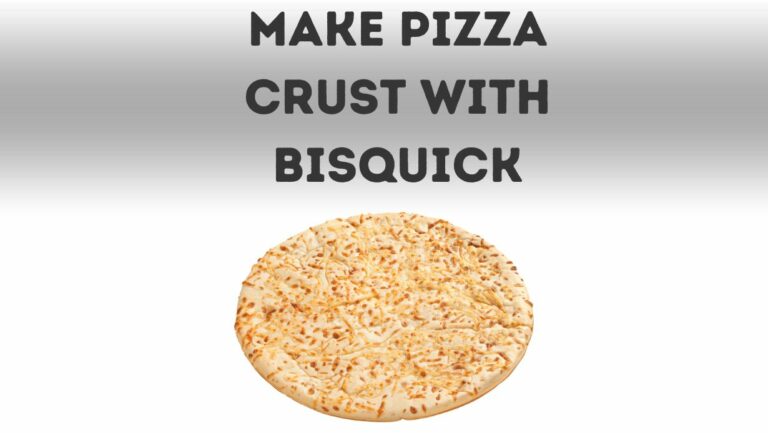
Tomato Sauce and Pasta Sauce For Pizza
Pizza is one of the most beloved foods around the world. With its crispy crust, gooey cheese, and delicious toppings, pizza is the perfect comfort food for any occasion. But when it comes to making homemade pizza, the sauce can make or break the dish. But, can you use tomato sauce and pasta sauce for pizza? Many people wonder if they can use tomato sauce or pasta sauce for pizza. The answer is yes, but there are some key differences to keep in mind.
In this blog post, we will explore the differences between tomato sauce and pasta sauce and how they can be used for pizza. Knowing the difference between these sauces is important because they have different flavors and textures that can affect the overall taste of your pizza. We will discuss the advantages of using tomato sauce and pasta sauce for pizza, and provide tips for preparing each sauce for the perfect pizza. Additionally, we will offer recommended pizza recipes for each sauce to get you started.
Whether you’re a seasoned pizza pro or a beginner, this blog post is for you. By the end, you’ll have a better understanding of tomato sauce and pasta sauce and how they can be used to create delicious homemade pizza.
Tomato Sauce vs. Pasta Sauce

When it comes to making pizza, sauce is one of the most important components. While there are many types of pizza sauces available, two of the most common are tomato sauce and pasta sauce. Understanding the differences between these sauces can help you create the perfect pizza.
Tomato Sauce
Tomato sauce is a type of sauce made from pureed or diced tomatoes, often with added herbs and spices (As mentioned in Project Gutenberg). The basic ingredients of tomato sauce include tomatoes, onion, garlic, salt, pepper, and olive oil. The sauce is cooked until the tomatoes break down into a thick, smooth consistency. The flavor of tomato sauce is typically tangy and acidic, with a slight sweetness.
Pasta Sauce
Pasta sauce, also known as marinara sauce, is a type of sauce made from tomatoes, onions, garlic, and herbs, often with the addition of meat or vegetables. The sauce is usually cooked slowly over low heat to allow the flavors to meld together. The flavor of pasta sauce is often richer and more complex than tomato sauce, with a deeper tomato flavor and the addition of herbs such as basil and oregano.
Key Differences Between Tomato Sauce and Pasta Sauce
While both tomato sauce and pasta sauce are made from tomatoes and can be used for pizza, there are several key differences between the two:
- Texture: Tomato sauce is usually smoother and more liquid than pasta sauce, which can be chunkier and thicker. This is because tomato sauce is often pureed or blended, while pasta sauce may contain diced vegetables or meats.
- Consistency: Tomato sauce is typically thinner and runnier than pasta sauce, which can be thicker and more substantial. This is because tomato sauce is often used as a base for other dishes, such as soups or stews, while pasta sauce is meant to cling to pasta noodles.
- Flavor: Tomato sauce has a tangy and acidic flavor, while pasta sauce is often richer and more complex. Pasta sauce may have additional flavors from ingredients such as herbs, meat, or vegetables, while tomato sauce is usually more straightforward.
Understanding these differences can help you choose the right sauce for your pizza and achieve the perfect balance of flavors and textures.
Can You Use Tomato Sauce and Pasta Sauce For Pizza
Tomato sauce is a classic pizza sauce that is widely used in many pizza recipes. It has a tangy flavor that pairs well with a variety of toppings and can be easily prepared at home. Here are some advantages of using tomato sauce for pizza:
- Tangy flavor: Tomato sauce has a naturally tangy flavor that adds a refreshing contrast to the other pizza toppings. It is acidic and has a bright, fresh taste that complements the cheese and other toppings.
- Ability to pair well with a variety of toppings: Tomato sauce is versatile and pairs well with many toppings, such as cheese, meats, and vegetables. It adds a layer of flavor that enhances the taste of the pizza.
When preparing tomato sauce for pizza, it is important to consider some tips to enhance the flavor:
- Use fresh, high-quality tomatoes: The quality of the tomatoes used in the sauce can greatly impact the flavor. Using fresh, ripe tomatoes will give the sauce a bright, fresh taste.
- Add herbs and spices: Adding herbs like basil, oregano, and thyme, can add depth and complexity to the sauce. Additionally, adding some garlic or onion can add some extra flavor to the sauce.
Consistency and texture considerations are also important when preparing tomato sauce for pizza:
- The sauce should be thick enough to spread easily on the pizza dough without making it soggy.
- Avoid overcooking the sauce, as this can result in a thick, chunky sauce that is difficult to spread evenly.
Here are some recommended pizza recipes using tomato sauce:
- Margherita pizza: Tomato sauce, fresh mozzarella cheese, and fresh basil leaves.
- Pepperoni pizza: Tomato sauce, pepperoni, and shredded mozzarella cheese.
- Veggie pizza: Tomato sauce, sliced bell peppers, onions, mushrooms, and shredded mozzarella cheese.
However, tomato sauce is a great choice for pizza and can be easily prepared at home with a few simple ingredients. It adds a tangy flavor and pairs well with a variety of toppings. By following the tips for enhancing the flavor and considering consistency and texture, you can create a delicious pizza that will satisfy any pizza lover’s cravings.
Using Pasta Sauce for Pizza
Pasta sauce can be an excellent alternative to traditional tomato sauce for pizza, offering a rich and flavorful base that can be easily adapted to suit different tastes. Here are some advantages of using pasta sauce for pizza, as well as tips for preparing it and recommended pizza recipes to try.
Advantages of Using Pasta Sauce for Pizza:
- Rich and flavorful base: Pasta sauces tend to have a richer, more complex flavor than tomato sauce, thanks to additional ingredients like herbs, spices, and vegetables. This can add an extra dimension of flavor to your pizza, making it more satisfying and enjoyable to eat.
- Can add additional herbs and spices for depth of flavor: While pasta sauce already contains plenty of herbs and spices, you can also add additional ones to customize the flavor to your liking. For example, you can add fresh basil or oregano for a more Italian-inspired taste, or red pepper flakes for some heat.
Preparing Pasta Sauce for Pizza:
- Tips for adapting pasta sauce for pizza: To adapt pasta sauce for pizza, you may want to reduce its thickness slightly to make it easier to spread on the crust. You can do this by simmering the sauce over low heat for a few minutes, or by adding a bit of tomato paste or water to thin it out.
- Consistency and texture considerations: The consistency of pasta sauce can vary, depending on the type you choose. Some sauces are thick and chunky, while others are smooth and runny. Consider the texture of the sauce when choosing toppings for your pizza, as you may want to balance out the sauce with ingredients that add crunch or chewiness.
Recommended Pizza Recipes Using Pasta Sauce:
- Margherita Pizza: Spread a layer of pasta sauce over a pre-baked pizza crust, then add sliced fresh mozzarella cheese and fresh basil leaves. Bake in a hot oven until the cheese is melted and bubbly.
- Meatball Pizza: Brown some ground beef or turkey meatballs in a skillet, then add them to a layer of pasta sauce on a pizza crust. Top with shredded mozzarella cheese and bake until the cheese is melted and bubbly.
- Veggie Pizza: Spread a layer of pasta sauce on a pizza crust, then add your favorite vegetables, such as sliced mushrooms, bell peppers, and onions. Top with shredded mozzarella cheese and bake until the cheese is melted and bubbly.
Moreover, pasta sauce can be a delicious and flavorful option for pizza, offering a more complex taste profile than traditional tomato sauce. By adapting it to suit your tastes and experimenting with different toppings, you can create a pizza that’s both satisfying and enjoyable to eat.
FAQs About Using Tomato Sauce and Pasta Sauce For Pizza
Can you use pasta sauce as pizza sauce?
Yes, you can substitute pizza sauce with pasta sauce, pesto, white garlic sauce, Buffalo sauce, hummus, and more. The right recipe can make any sauce usable as a pizza base. However, make sure you’re well aware of the flavor profiles of your toppings with your base sauce.
Is pizza sauce the same as pasta sauce?
No, pizza sauce and pasta sauce are not the same. The primary difference between the two types of tomato-based sauces is that pasta sauce from a jar is cooked (usually slow-roasted), and pizza sauce is uncooked, with ingredients combining over a period of hours. This difference in preparation method leads to differences in texture, consistency, and flavor.
Can I use pasta sauce instead of tomato sauce?
Yes, you can use pasta sauce instead of tomato sauce. These sauces are packed with flavor, so be sure to adjust the other ingredients and flavors in your recipe accordingly. Use as a 1 to 1 substitute.
Can you use marinara pasta sauce as pizza sauce?
Yes, you can use marinara pasta sauce as pizza sauce. In fact, cooks in Italy often use marinara and pizza sauce interchangeably by adding pasta water or spices to a base tomato sauce. If using marinara sauce, consider reducing its thickness slightly by simmering it over low heat for a few minutes or adding a bit of tomato paste or water to thin it out.

Handsomepizza.com is the brainchild of two pizza-obsessed friends who wanted to share their love of pizza. We are dedicated to bringing you the latest news, reviews, and insights on pizza.






